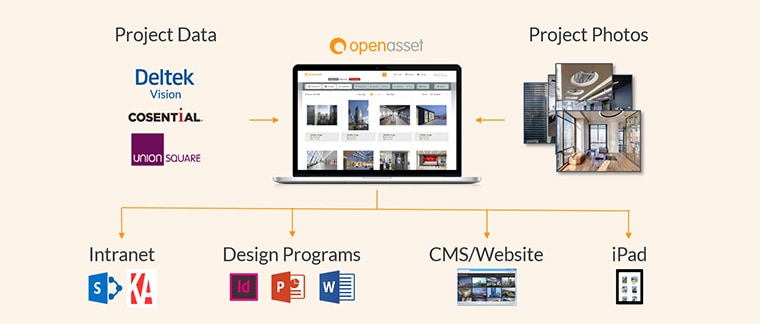In today’s tech-savvy world, where taking and sharing photos is an every day occasion, it’s no wonder most firms have an ever-expanding cache of digital assets. While architectural and engineering executives realize that more images are being added to their firms’ libraries, research shows that they significantly underestimate just how rapidly their digital assets are expanding. What’s more, these leaders often underestimate the time and effort it takes to manage these resources, and their firms’ productivity and efficiency can suffer as a result.
Leadership and marketers don’t see things the same way.
The OpenAsset team recently found that while nearly three-quarters of executives believe their firms added fewer than 1,000 images last year, the majority of marketing employees say that number was actually well over 1,000. So much so that more than 35% of marketers say the image additions actually totaled 2,500 or more.
The majority of marketers also believe their companies will create more images in the coming year than they did last year. In contrast, most leaders think the number of new images will remain about the same.
More technology = more images.
The reality for AE marketers today is that they need more images because they have more places to showcase them. A relatively recent survey by Scott D. Butcher, CSPM, shows that the need for high quality marketing photography in AEC is escalating. Butcher points out that there’s a greater focus on dynamic, fresh content than ever before, and websites need to be updated regularly with the latest project photos. Not to mention the growing demand to keep on feeding the social media channels.
In addition, greater competition for projects and desire for niche expertise means AE marketers must be able to demonstrate their specific capabilities in presentations and proposals. And that means taking more photos of more projects.
Finally, the ease of taking quality photography—due in part to the increasing number of smartphone users with instant access to a high res camera—means there are more people contributing to the influx of photos. Butcher’s research shows that most AE firms use images not only from professional shoots but also from their employees.
The bottom line? The increased need for photos coupled with increased opportunities to take them means that the image proliferation—and the time it takes to manage it—will only continue to expand.
A DAM can improve efficiency.
Around 36% of marketing professionals at engineering firms believe the marketing coordinator already spends a full day or more per week managing images. Despite this considerable investment of man hours, over a quarter of marketing people and close to half of executives believe fewer than 50% of a firm’s images can efficiently be found and used. Furthermore, companies say the biggest image problem in their organizations is not having time to look for the images they need.
But when companies use a DAM and make someone responsible for overseeing it, the tune changes considerably. Firms with both a DAM and someone to manage it are more than twice as likely to say that more than three-quarters of their images can efficiently be found and used compared to firms with no DAM in place.
DAM users go on to say that the top benefits of the system are improved marketing productivity and improved operational efficiencies. These benefits likely stem from the ability to give more people direct and controlled access to images—which happens in DAM environments—and which reduces demand on the marketing team and clears them as a production bottleneck.
A DAM may be more important than ever.
With the number of digital assets escalating faster than ever, now may be high time to start thinking about getting a DAM in place. Establishing your system now will ensure your team is ready to handle the inevitable onslaught of images headed your way, that your firm is capable of leveraging those images for better marketing results, and that precious productivity doesn’t get compromised in the process.




